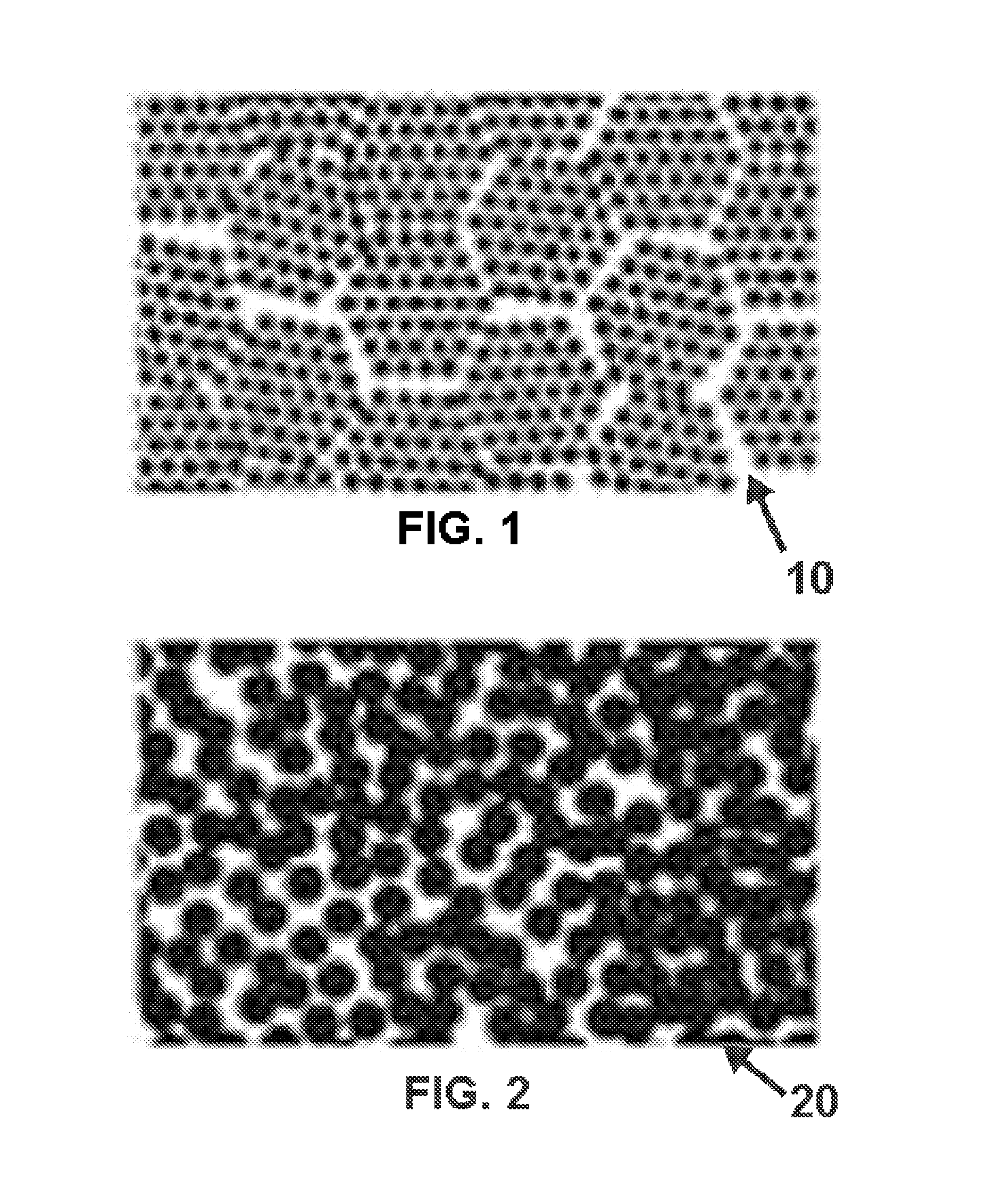Mechanical resonators fabricated out of bulk-solidifying amorphous metal alloys
a technology of amorphous metal alloys and mechanical resonators, which is applied in the direction of mechanical vibration separation, instruments, music aids, etc., can solve the problems of high mechanical q factor, and the ability to accept a reduced set of operating characteristics of mechanical resonators, etc., to achieve the effect of superior elastic limit, high corrosion resistance and wear resistan
- Summary
- Abstract
- Description
- Claims
- Application Information
AI Technical Summary
Benefits of technology
Problems solved by technology
Method used
Image
Examples
Embodiment Construction
[0075]The primary design goals for the selection of bulk-solidifying amorphous alloys in mechanical resonators centers around their need for materials of construction that provide for extraordinarily high Q factors. The reason bulk-solidifying amorphous alloys exhibit high Q factors has to do with their atomic structure. FIG. 2 depicts a bulk-solidifying amorphous alloy showing the amorphous structure 10, compared to the crystalline structure illustrated in FIG. 1 where the grain boundaries are shown in FIG. 1 at 10. The atomic structure is arranged so that there is no lattice slip at the grain boundaries in bulk-solidifying amorphous alloys. As such the material is not crystallized; instead it is virtually a “single crystal”. The bulk-solidifying amorphous alloy material is amorphous, having no long range order of the position of the atoms, resulting in having bulk-solidifying amorphous alloys “look” like fused silica, but are stronger than titanium.
[0076]Another important material...
PUM
| Property | Measurement | Unit |
|---|---|---|
| Fraction | aaaaa | aaaaa |
| Fraction | aaaaa | aaaaa |
| Fraction | aaaaa | aaaaa |
Abstract
Description
Claims
Application Information
 Login to View More
Login to View More - R&D
- Intellectual Property
- Life Sciences
- Materials
- Tech Scout
- Unparalleled Data Quality
- Higher Quality Content
- 60% Fewer Hallucinations
Browse by: Latest US Patents, China's latest patents, Technical Efficacy Thesaurus, Application Domain, Technology Topic, Popular Technical Reports.
© 2025 PatSnap. All rights reserved.Legal|Privacy policy|Modern Slavery Act Transparency Statement|Sitemap|About US| Contact US: help@patsnap.com

